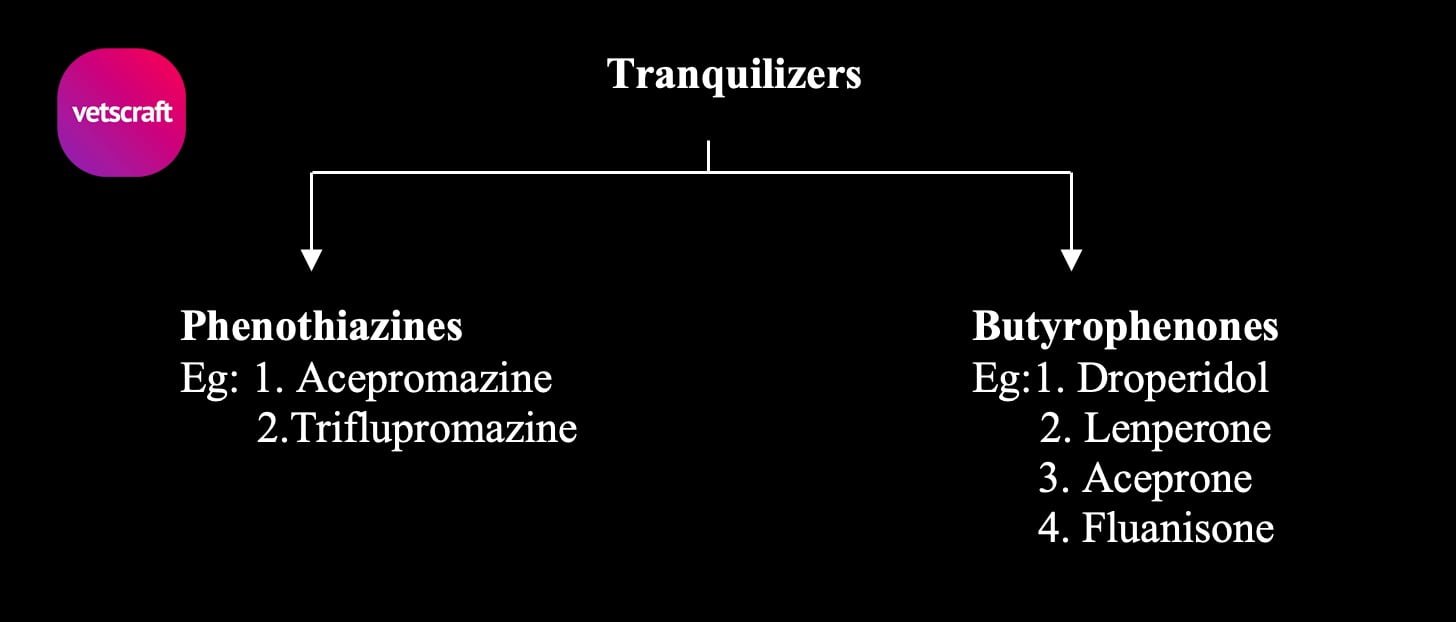TABLE OF CONTENTS
Tranquilizers
Tranquilizers induce a state of tranquility and calmness in which the patient is awake, relaxed and unconcerned with its surrounding. These used as preanaesthetics in veterinary medicine.
Sufficient stimulation will arouse the patient from tranquilizers. These act by depressing the hypothalamus and reticular activating systems. Examples of Tranquilizers are Phenothiazines (Acepromazine, Triflupromazine) & Butyrophenones (Droperidol, Lenperone, Aceprone, Fluanisone).

Phenothiazines
Phenothiazines relieve anxiety and calms the patients. May potentiate toxicity of OPC and activity of procaine hydrochloride.
Phenothiazines decrease arterial blood pressure and induce hypothermia in animals.
Phenothiazines have antiemetic effect.
Phenothiazines have anti-arrhythmic effect. They abolish halothane sensation to catecholamines.
Phenothiazines have antihistaminic effect. Not to be used in animals, that are to undergo allergic test.
Phenothiazines causes peripheral vasodilation due to alpha 1 adrenergic blocking effect resulting hypotension and hypothermia. Not used in animals in shock.
Phenothiazines causes paraphimosis and permanent penile prolapse/paralysis in stallions.
Prevent/decreases the severity of the malignant hyperthermia in susceptible pigs exposed to halothane.
Drug interaction with thiamylal was reported.
Half the recommended dose in geriatric neonatal and animals with liver dysfunction.
Phenothiazines decreases PCV by spleenic sequestration of RBC’s.